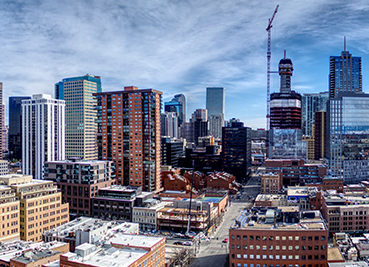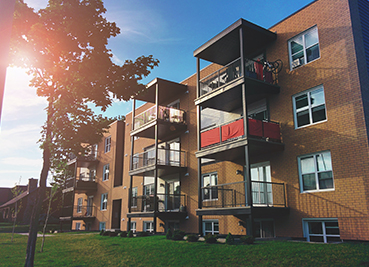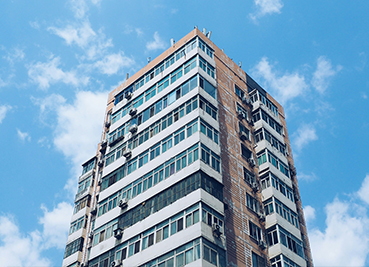Original content by Dennis Huspeni | Oct 26, 2021 (Updated Oct 27, 2021)
Apartment rents in metro Denver reached over $2 per square foot for the first time in recorded history for a third-quarter average of $1,726 per month, according to the Apartment Association of Metro Denver’s report.
Meanwhile the vacancy rate for the area came in below 4% for the second quarter in a row — the first time that’s happened in 27 years,
The report, which gathers data from almost 130,000 apartments across six metro Denver counties, marked the 4.5% hike in average rents from Q2, $1,651. That’s a 13.5% year-over-year rise in average rents.
“There are approximately 32,000 new apartments under construction, but the time it takes to build has increased considerably, from under 20 months to a new average of more than 30,” Mark Williams, executive vice president of the association, said in an interview.. “There are another 58,000 apartments in some phase of planning consideration, but it’s the speed at which those additional projects get approved and built that will determine future trends in Metro Denver’s rent levels.”
Labor shortages and construction materials supply chain issues, like for lumber, are causing that increase in time to develop apartments.
Andrew Hamrick, senior vice president of government affairs for the association, said Denver needs to deliver more than 10,000 new apartment units for five consecutive years before the market shifts from its current landlord-favoring conditions. The most it has delivered is more than 13,000 – which was in 2017. Developers are on pace to deliver less than 10,000 multi-family units in 2021, Hamrick said.
“It’s easy to look at demand as a product of population growth. That’s an element, but also the economy is better,” Hamrick said. “People are deciding they don’t need a roommate, or want some dedicated office space, or moving out of their parents’ house. .. (Either way) there’s not enough new housing units being created to keep up with demand.”
While metro Denver’s vacancy rate inched up a bit to 3.8%, from 3.7% in Q2, report authors consider anything below 4% to be “frictional vacancy,” which is normal turnover. It’s the first time in 27 years two consecutive quarters’ vacancy rate has been below 4%.
Asked if Denver’s tight housing market is contributing – prices have been inching up, while inventory has dwindled to historic lows creating a decidedly sellers market fraught with bidding wars and all-cash offers – Mark Williams agreed.
“It goes to show how flexible apartments are,” Williams said. “A lot of people are relocating to Colorado, and the first step now is to rent in a lot of these cases. … That’s really contributing to the tight vacancy. People move where they want, then rent an apartment while waiting to buy a single-family home.”
The report has been produced since 1981 by the Apartment Association of Metro Denver. Its authors are Ron Throupe, University of Denver Daniels College of Business Burns School of Real Estate & Construction Management, and Jennifer Von Stroh of Colorado Economic and Management Associates.
“This rent increase phenomenon is not a local condition,” said Throupe in a statement. “Other metropolitan areas are also experiencing similar apartment market conditions. … This quarter’s increase can partially be explained by units that turned over being repriced, incorporating rent increases from the second-quarter rent surge.”
That $108 increase from Q1 to Q2 average rents was “the largest quarterly dollar change ever recorded by this survey.”
The Denver metro apartment market added 2,400 new units to inventory in Q3. Most alll of those units are getting rented, as the report showed 1,862 were rented (which report authors call “absorption.”) The overall net absorption of units for 2021 is now at 14,365 net units.
“Total net absorption for 2021 has now surpassed the boom year of 2018, which saw 13,708 units absorbed,” Throupe said.
Williams and Hamrick blamed at least part of the lack of inventory on government regulations and resistance by existing residents.
They pointed out Denver City Council’s recent proposal to force developers to include a certain percentage of affordable-rent apartments with market-rate ones.
“Those types of measures always have unintended consequences on housing costs and do exactly the opposite of what the policy is chasing,” Hamrick said. “The national Apartment Association shows 37% of a developer’s costs are due to compliance-related expenses, and Denver is the ninth most difficult county to build multifamily housing in.”
The highest area rents came in Boulder/Broomfield at $1,929, with a 3.2% vacancy rents. Most affordable rents came in Adams County, at $1,666 per month, with the area’s highest vacancy rate at 4%.
The hottest submarkets are Aurora North, with just 1.1% vacancy, and Denver’s City Park, with 1.6%.




